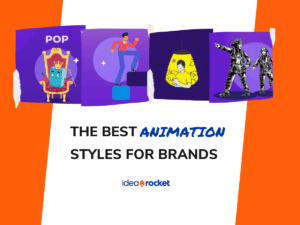When you think about ways to expand the audience for your marketing videos you might think about advertising or SEO. Those are both useful options, but there’s one valuable strategy you may not have considered—accessibility. Making your videos more accessible might sound like something you do to show that you’re inclusive. But the truth is that accessible marketing videos can help you reach the largest minority group in the world: people with disabilities.
We spoke to Svetlana Kouznetsova, an independent accessibility consultant who also happens to be deaf, about how accessible marketing videos can help businesses grow.
Why Accessible Marketing is So Important
People with disabilities make up the world’s largest minority group, an estimated 1.85 billion people.
“It’s larger than the populations of China and the EU combined!” Kouznetsova said. It stands to reason that reaching these audiences can help increase your engagement and improve your ROI.
Although this group controls more than $1.9 trillion in annual disposable income, their needs are often ignored. In marketing, we talk about creating messaging that will resonate with our audience, yet often we forget to ensure that this group of people is able to access and experience our content in the first place.
“Marketers need to think about accessibility all the time,” Kouznetsova said. “It’s not a nice thing to have. It’s a necessity for all disabled people in all industries and all areas of life.”
Accessibility Basics for Marketers
If you want to start making accessible marketing videos, understanding the needs of disabled people is the best place to start. But that may be easier said than done.
“Disability is not a monolith. There are many different types of disabilities: physical, hearing, visual, cognitive. Even people with one type of disability have different experiences. So there’s no one-size solution for all accessibility issues,” Kouznetsova said.
While many people without disabilities think that it’s enough to add captions or a transcript after the video is complete, these afterthoughts rarely go far enough to meet the needs of disabled people.
“There may be some accessibility tips and suggestions that you can easily implement, but there needs to be a well planned and customized strategy for optimal accessibility to be implemented by all team members,” Kouznetsova said.
Everything from the fonts you choose to your hosting platform, to your punctuation can affect the accessibility of a video.
How to make Accessible Marketing Videos
“The easiest way to implement accessibility is to implement it from the beginning. It will save you time and money,” Kouznetsova said.
An accessible video is one that can be used by disabled people with all different kinds of disabilities. Your video should be:
- hosted on a platform that is properly designed for people with mobility disabilities and assistive technology users,
- controlled with video controls that are easy for anyone to find and use,
- With an option for users to turn on high quality captions and change their font size, color, location, etc,
- including a descriptive transcript prepared by a professional.
Keep in mind that a descriptive transcript is not the same as a basic audio transcript. An audio transcript includes just the words that are spoken, possibly with some notation about sound effects or music.
A descriptive transcript includes descriptions of visual elements for people who cannot see them in the video. This might include descriptions of the scene, notion of any text visible on the screen, and identification of each speaker.
Captions Improve Accessibility for Everyone
Captions and transcripts are one powerful way to make your videos more accessible. Millions of people use captions, whether they have hearing loss or not.
As Kouznetsova outlines in her TedX talk (also embedded below), captions and transcripts can also help you reach foreign language learners, people watching your video in a noisy environment, or those who just don’t want to turn on the sound right now. In short, captions and transcripts can help you reach a wider audience.
But just having captions or transcripts is not enough. They must be readable. That means:
- Using a clear and legible font
- Choosing a good color contrast of font against background
- Chunking text in meaningful ways
- Applying proper punctuation
- Following grammar rules
“Captioning is an art. There are many moving parts to consider in order to make text look professional and easy to read,” Kouznetsova said.
Reading poorly formatted captions and transcripts is like listening to bad audio. It’s distracting and may drive viewers to go looking for content that’s easier to consume.
Turning on auto captions or publishing the automatic transcription is almost as bad as doing nothing at all. These hands-off solutions tend to be riddled with errors and create a challenging experience for audiences. It’s best to wait until you have a high-quality transcript and captions before launching your video.
Thinking beyond videos – Accessible Marketing Strategy
“Marketing is not limited to just videos or podcasts. You also need to consider making your websites, online forms, email newsletters, social media, digital files (such as PDFs), and events (online and in person) accessible,” Kouznetsova said.
An accessibility specialist like Kouznetsova can help you create an accessibility strategy for your business.
When you create accessible marketing videos, you reach a wider audience. You invite people with disabilities to engage more deeply with your brand. Even those without disabilities may use some of these tools to experience your video in more meaningful ways.
“If you make your product, service, or environment accessible to disabled people – whether it’s 1,000 people or just one person, it benefits everyone,” Kouznetsova said.
For help creating quality videos that launch your message into orbit, contact the video marketing experts at IdeaRocket.



